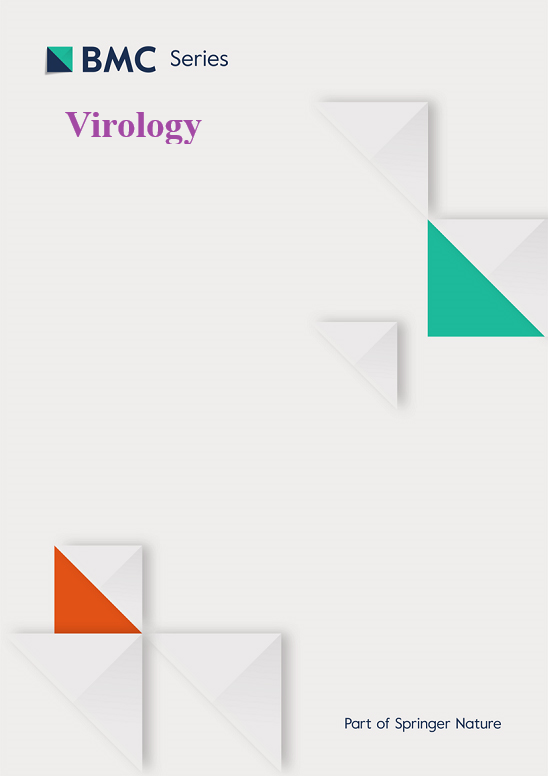桃分枝杆菌同时获得两种甜菜极病毒,提高了两种病毒的传播效率
IF 2.8
3区 医学
Q3 VIROLOGY
引用次数: 0
摘要
甜菜轻度黄化病毒(BMYV)和甜菜萎黄病毒(BChV)是感染甜菜植株的两种密切相关的多极病毒,可引起叶片黄化并造成高产损失。脊髓灰质炎病毒是韧皮部有限的,严格地由蚜虫以循环和持久的方式传播。在自然界中,甜菜植物可以同时感染这两种病毒,但BMYV和BChV在一株植物中共存对病毒积累和蚜虫传播的影响从未得到过解决。在这项研究中,我们发现,尽管感染了约40%的受感染韧皮部细胞,但每种病毒的积累不受另一种病毒存在的影响。两种病毒在桃蚜的同一部位穿过肠道上皮,没有任何证据表明它们竞争受体结合。相反,当蚜虫从含有等量病毒的人工培养基中同时获得两种病毒时,两种病毒的传播效率都提高了。相比之下,只有BMYV在从共感染植物获得时表现出增强的传播。这表明在接种步骤中的协同效应促进了蚜虫在甜菜细胞中的病毒传递。我们的结果揭示了微调病毒-病毒和病毒-载体的相互作用,对流行病学和疾病管理具有潜在的影响。本文章由计算机程序翻译,如有差异,请以英文原文为准。
Co-acquisition of two sugar beet poleroviruses by M. persicae increased the transmission efficiency of both viruses
Beet mild yellowing virus (BMYV) and beet chlorosis virus (BChV) are two closely related poleroviruses infecting sugar beet plants, which induce leaf yellowing and cause high yield losses. Poleroviruses are phloem-limited and strictly transmitted by aphids in a circulative and persistent manner. In nature, sugar beet plants can be coinfected by these two viruses, but the outcome of BMYV and BChV coexistence in a plant on virus accumulation and aphid transmission has never been addressed before. In this study, we showed that the accumulation of each virus was not affected by the presence of the other, despite coinfecting about 40 % of infected phloem cells. Both viruses crossed the gut epithelium at the same site in Myzus persicae without any evidence of competition for receptor binding. On the contrary, when aphids simultaneously acquired both viruses from an artificial medium containing equal amounts of each virus, the transmission efficiency increased for both viruses. In contrast, only BMYV exhibited enhanced transmission when acquired from a coinfected plant. This suggests a cooperative effect at the inoculation step facilitating virus delivery in sugar beet cells by aphids. Our results shed light on fine-tuned virus-virus and virus-vector interactions, with potential implications for epidemiology and disease management.
求助全文
通过发布文献求助,成功后即可免费获取论文全文。
去求助
来源期刊

Virology
医学-病毒学
CiteScore
6.00
自引率
0.00%
发文量
157
审稿时长
50 days
期刊介绍:
Launched in 1955, Virology is a broad and inclusive journal that welcomes submissions on all aspects of virology including plant, animal, microbial and human viruses. The journal publishes basic research as well as pre-clinical and clinical studies of vaccines, anti-viral drugs and their development, anti-viral therapies, and computational studies of virus infections. Any submission that is of broad interest to the community of virologists/vaccinologists and reporting scientifically accurate and valuable research will be considered for publication, including negative findings and multidisciplinary work.Virology is open to reviews, research manuscripts, short communication, registered reports as well as follow-up manuscripts.
 求助内容:
求助内容: 应助结果提醒方式:
应助结果提醒方式:


